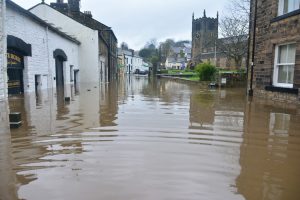Despite the good reputation that it tends to get, the Florida weather is not always the mild, warm sun that people tend to imagine. In fact, it’s pretty humid and often includes a lot of rain. And that, in turn, can cause flooding pretty often. So if you live in Florida, or are planning on moving there, you should do your best to flood-proof your home. Not quite sure what that means? Don’t worry, Best Movers Florida has you covered! This handy guide will help you learn exactly how to flood-proof your home.
Flooding in Florida
The vast majority of Florida is at or even below sea level. This alone would be enough to cause some concerns about flooding. But to make matters worse, Florida is often hit by hurricanes that can cause flooding. And on top of it all, it also gets more than its fair share of rain throughout the year. So even if you live in some of Florida’s most hurricane-proof cities, you’re not always safe from flooding. All in all, flooding is a common problem in the Sunshine state. And it is one where it doesn’t take a lot of time or force to cause some serious damage. So if you’re settling there, even just temporarily, you should definitely learn how to flood-proof your home.

Tips on how to flood-proof your home
There’s really only one sure fire way to flood-proof your home: elevation. The building, buying or renting high up above sea level and away from the ocean or rivers is the one and the only thing that guarantees your home’s safety from floods. The higher the better! Of course, that’s not always an option. And besides, you’d be hard pressed to find a place in all of Florida that doesn’t have some risk of flooding. That doesn’t, however, mean that you can’t do something to protect yourself, your home and your possessions.
Evaluate the risk
The first step to taking any measures is knowing exactly what you’re dealing with. How common is flooding in your area? How bad is it when it happens? Should you be worried about a particular season? These are all questions you should ask yourself as you estimate the risk of flooding for your house. You can start your research at Floodsmart.gov, the website of the National Flood Insurance Program. It uses a community’s base flood elevations, flood zones, and floodplain boundaries to estimate insurance rates which can give you an idea of how at-risk your home is.
Of course, that is just the start. You should do further research yourself. Ask previous owners and neighbors about your property’s and neighborhood’s history with flooding, for example. Or get an in-person estimate from an insurance company.
Invest in flood insurance
Flood insurance doesn’t prevent flooding or the damage it brings with it, but it protects you from the losses caused by it. Of course, you can expect government-issued disaster assistance, especially if you live in a high-risk area, but you shouldn’t rely on it. These emergency funds are not always available and certainly not always adequate so they probably won’t cover your losses in the event of serious flooding. And don’t forget: most standard home insurance policies don’t cover the damage caused by extreme weather, which includes flooding. So even if you don’t live in a flood zone (where you may be required by law to carry insurance), flood insurance is a good investment.

Consider storage as a way to flood-proof your home
If you’re particularly worried about some of your more valuable possessions and your home is in a flood zone or other high-risk area, you may want to store them somewhere off-site. Just make sure to check out the storage units and their location before committing. And if you decide on packing services Florida as part of the storage and transportation, ask your movers whether they have any waterproof packaging and how they will protect your stuff from water damage.
Elevate appliances
The lowest parts of the house are always the most vulnerable to flooding damage. To protect yourself from the worst of it, lift your boilers, AC units, utilities, and other appliances higher up. Depending on your specific needs, you can mount them on walls, put them on platforms or even take them to a higher floor. While you’re at it, make sure your switches, sockets, circuit breakers and wiring are all at least a foot above the expected levels of flooding in your area.
Make the best use of shelves
Speaking of elevation as a way to flood-proof your home, shelves are your friends. They’re easy to build, a great way to decorate and offer surprisingly effective protection from flooding damage. So line your walls with shelves and cabinets and put the most important of your possessions high up above the expected flooding levels.

Anchor outdoor equipment
When it comes to outdoor equipment and appliances (such as outdoor AC units, fuel tanks or generators), elevation may not be enough. Anchor them properly to make sure they do not contaminate the ground in the event of flooding!
Modify water valves
Interior or exterior backflow valves, as well as gate valves which are operated by hand, can be a good idea if your drains often back up. They prevent sewage from backing up into your home when there’s too much water coming into the pipes. Consult a licensed plumber on the best choice for you. Even if these measures can end up quite expensive sometimes, they’re well worth the money.
Extreme measures to flood-proof your home: consider moving
Sometimes you will find that your best efforts to flood-proof your home are just not enough. If you think the risk of flooding and the potential damage are too high, it may be time to relocate. So hire movers Gainesville FL and find your luck elsewhere! Look for a lower-risk area in Florida or even a place somewhere out of state. And wherever you go, make sure you assess the flooding risk before buying.
